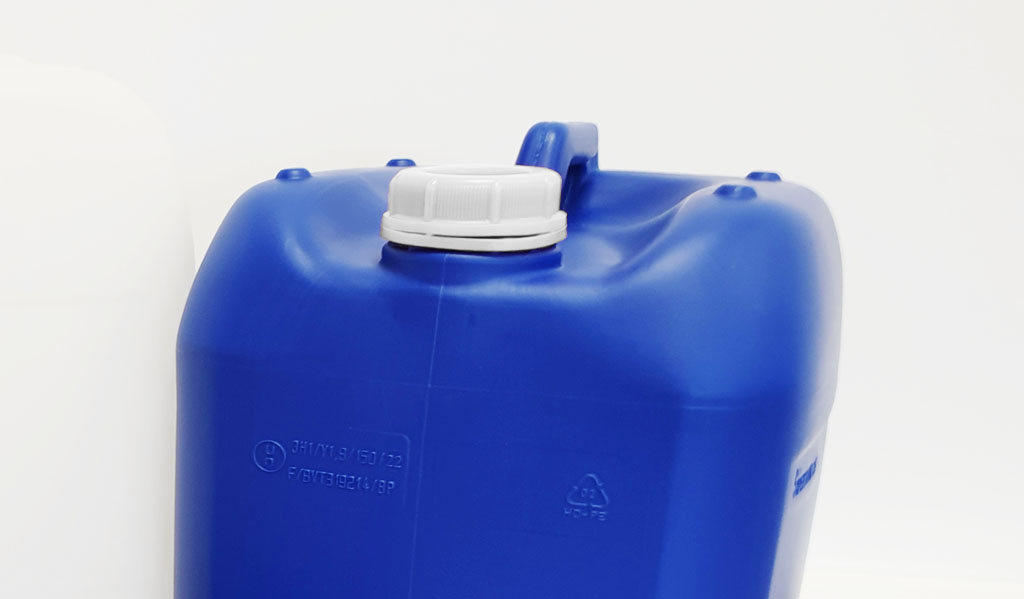UN Dangerous Goods Marking for packaging – an overview
If dangerous goods are to be packaged in transport packaging, ensuring that the packaging is suitable for the dangerous goods in question is crucial. Since transport routes are mostly international, the United Nations (UN) has issued a very comprehensive set of regulations on this. This ranges from classifying the individual substances to testing the packaging used.
As the entire body of regulations is very extensive, we will focus here on the testing and marking dangerous goods packaging according to UN.
Not all UN member states have transposed the recommended UN framework into law. When it comes to classifying packaging, however, the UN standard has become widely accepted, at least in Europe.
For classifying the packaging in a more simple and clearer way, the dangerous goods were classified into three hazard classes. This is done using Roman numerals I, II and III.
- I – High hazard, i.e. very dangerous substances
- II – Medium hazard
- III –Low hazard
Explanation of the UN number
Auf jeder einzelnen, nach UN geprüften Verpackung, muss eine vollständige Prüfnummer gut lesbar angebracht sein. Hier ein Beispiel für diese Nummer:
UN3H1/Y1,9/170/2017/D/XY/1234
A complete test number must be clearly marked on each individual UN-tested package. Here is an example of one of these numbers:
The code starts with “UN” for United Nations.
„3“ – This digit stands for the shape of the packaging:
- 1 -Drum, container
- 2 - Barrel
- 3 - Canister
- 4 - Box, crate or carton
- 5 - Pocket or bag
- 6 - Combination packaging
- 7 – Pressure container
„H“ – Material from which the packaging was made:
- A - Steel
- B - Aluminium
- C – Natural wood
- D – Plywood
- E – Chipwood
- G – Cardboard
- H – Plastic
- M – Paper
- N – Metals other than those mentioned above
- P – Glass
„1“ – Removable lid or non-removable lid:
- 1 – With non-removable lid
- 2 – With removable lid
„Y“ – The packing class or packing group:
- X – Suitable for class I, severe hazard (very dangerous substances)
- Y – Suitable for Class II, medium hazard
- Z – Suitable for class III, low hazard
For classifying the packaging in a clearer way, the dangerous goods were classified into three hazard classes. This is done using Roman numerals I, II and III.
„1.9“ – Indication of the maximum specific gravity of the filling substance:
- For example, for a 5 litre canister with “1.9” in the test number, the gross weight of the filled canister must not exceed 9.5 kg.
- For containers tested for solids only, the letter “S” is indicated with the maximum gross weight in kg.
„170“ –
Indication of the test pressure in kPa (kilopascal), for solids an "S" is entered here..
„2017“ – Year of manufacture.
„D“ – Country in which the packaging was tested.
„XY“ – Abbreviation for manufacturer.
„1234“ – Testing authority.
However, you must keep in mind that this UN number only provides information on the basic properties of the packaging. The clear suitability for a certain filling material cannot necessarily be derived from this!
A reference to the hazard class of the product should be found in the technical data sheet. This data sheet can be requested from the manufacturer anytime.
- Unfortunately, due to the complicated regulations, it’s not easy to find the right packaging for the substance to be bottled. The quantities in the inner packaging (e.g. per canister or bottle) and the quantities in the outer packaging (e.g. pallet with several canisters) must always be considered.
- You can find helpful links on the topic here (in german):
Packaging with UN approval can of course also be used for goods that are not dangerous goods, e.g. food canisters. The material used for producing the packaging (e.g. PEHD for plastic canisters) usually does not differ.
Plastic canister with UN testing
Plastic bottles with UN testing

